The GRVPA1 can be added to Home Assistant or operated as a stand alone device using its ESPHome pre installed WEB UI. Using the local WEB UI simply requires joining WiFi via the captive portal. The unit will advertise a captive portal name of grvpa1-xxxxxx where xxxxxx is a portion of the esp32’s unique MAC address. Be sure to record the device name to use for accessing it one it’s connected to your WiFi network. Here is a walk through of a captive join for the device named grvpa1-3639c4

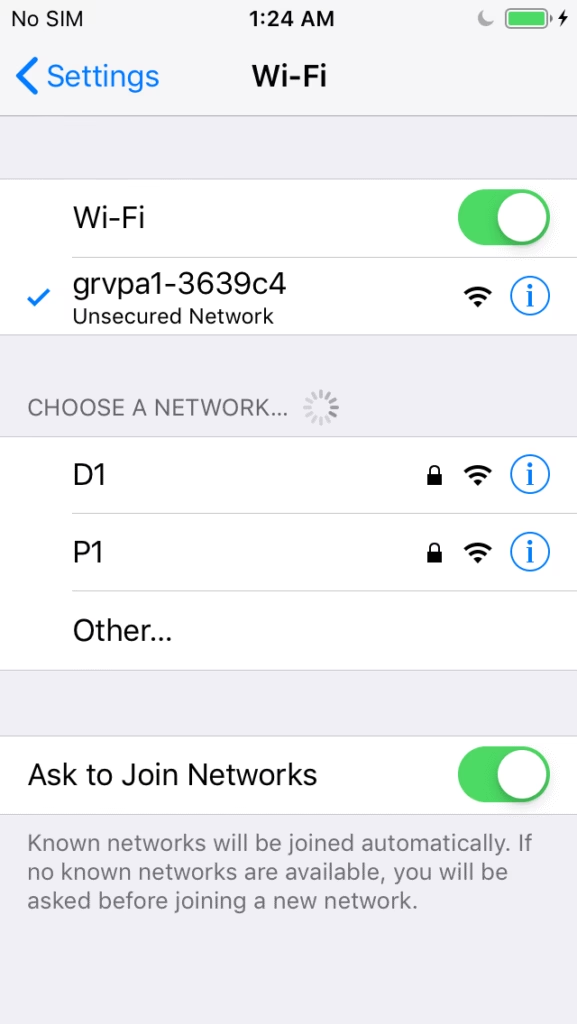
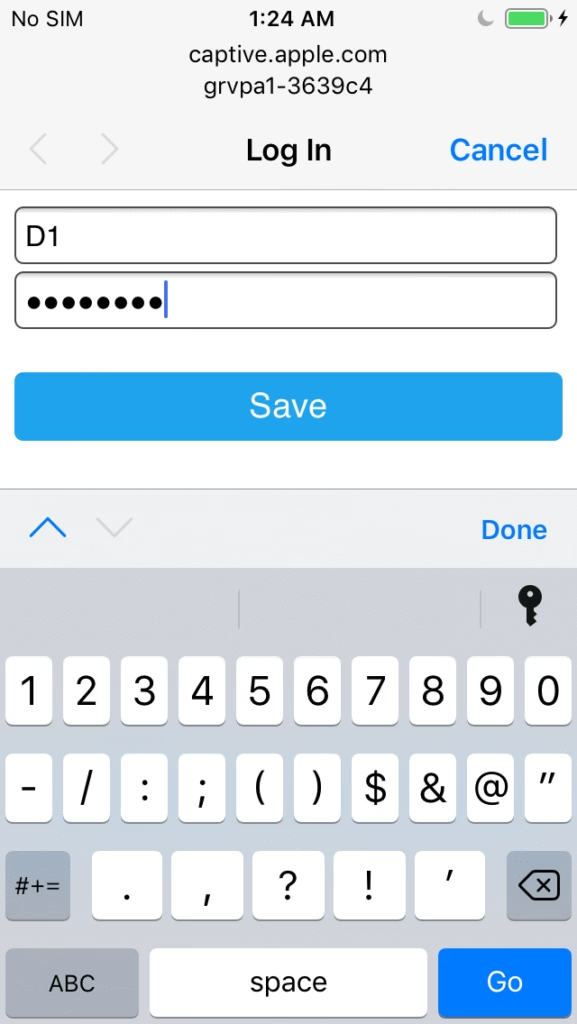
Once the GRVPA1 is joined to your local WiFi network you can access it from a mDNS advertised URL. Note: mDNS is usually available but not in all cases, if not, you need to find the DHCP address of the device from your local router and use that instead.
Navigate to unique device name e.g. http://grvpa1-3639c4.local
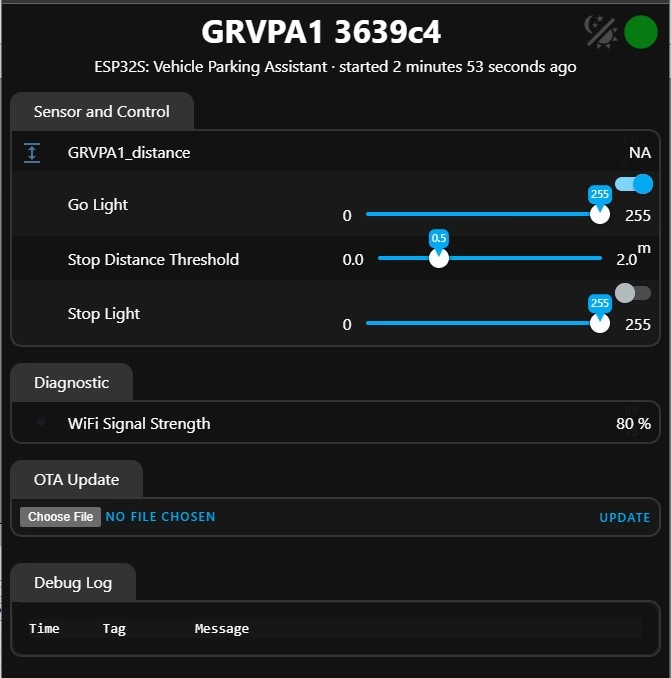
Generally just the stop distance needs to be set. The lights are automatically controlled and cannot be permanently altered.
ESPHome and Home Assistant Integration
ESPHome integration is inherently available on HA however adding a discovered ESPHome device does not give you secured full control of it. If there is reason to modify the device in any way it must be added to HA using the ESPHome Builder Add-On
The following process will add the GRVPA1 in fully managed mode you will be able to generate and update new firmware for the device. Please note that any error in passwords etc. can force a direct flash recovery. On the AC powered unit it will require a USB to UART adapter which we can provide but if your careful that’s rarely ever an issue.
Note for your safety: Flashing the ESP32 must be done with a 3.3v supply and not when connected to your AC supply.
On a USB-C unit you can just connect it on a PC and flash it directly for any recovery.
Requirements:
- The ESPhome Builder Add-on is required – see: https://esphome.io/guides/getting_started_hassio.html
- The ESPHome secrets.yaml file must be configured – very important since the device YAML uses this file.
- Refer to: https://esphome.io/guides/yaml/#secrets-and-the-secretsyaml-file
- File editing can be launched from the top right corner of the builder dashboard.
- Backup any ESPHome device YAML text in case you need to refer to any auto generated password if something goes wrong.
ESPHome Builder is an HA management console that parses YAML text for instructions to compile the various ESPHome components and functions for a firmware image that runs on our hardware devices. To add a device we need to create it’s YAML instruction set for the target device instance and it’s network environment. Most of this is abstracted using the ESPHome Builder console.
- We create device names and device type criteria around it
- We generate the API interface to talk with HA
- We add an OTA service to update the firmware from ESPHome Builder.
- We set WiFi network credentials to allow network access.
- We add component configurations.
- Once the install runs, all these elements are processed in the backend ESPHome subsystem
- We flash the device with one of many available methods.
ESPHome Device Preparation
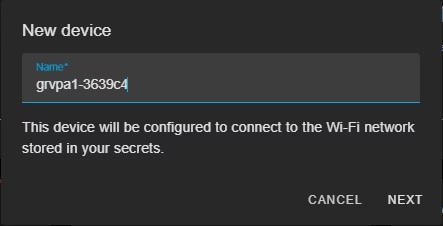
We add the device name, to make life easy use the current pre-flashed one.
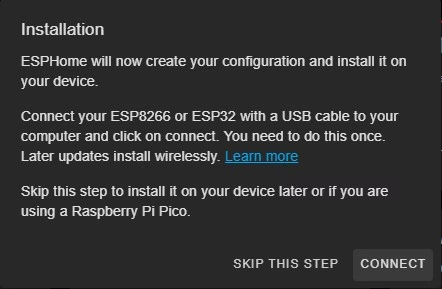
Skip this step, we will be using WEB UI file OTA upload method to flash the device.

The GRVPA1 is powered with an ESP32 as shown so we need to set it likewise.

Skip this step and note the generated unique key, this must be preserved in the config going forward.
Now we can edit the newly created device yaml file grvpa1-3639c4.yaml preserving the API key etc, add the example content code after the captive portal line, as shown and edit the noted elements in the example comments.
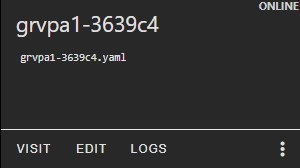
We should see this auto generated bare minimum device YAML.
esphome:
name: grvpa1-3639c4
friendly_name: grvpa1-3639c4
esp32:
board: esp32dev
framework:
type: esp-idf
# Enable logging
logger:
# Enable Home Assistant API
api:
encryption:
key: "cAfify7tfaZ7fEg/FwiGUiKLEZzoDwa3OBUuQH3PtHg="
ota:
- platform: esphome
password: "aac47812833fe20f10dd8ad7c8a1f946"
wifi:
ssid: !secret wifi_ssid
password: !secret wifi_password
# Enable fallback hotspot (captive portal) in case wifi connection fails
ap:
ssid: "Grvpa1-3639C4 Fallback Hotspot"
password: "x3WriQVGJt52"
captive_portal:Example GRVPA1 YAML Configuration
esphome:
name: grvpa1-3639c4
friendly_name: GRVPA1 # Or what ever you like
esp32:
board: esp32dev
framework:
type: esp-idf
# Enable logging
logger:
# Enable Home Assistant API
api:
encryption:
key: "<your_key>" # use the auto generated key here
# Edit OTA to match the auto genereated values
ota:
- platform: esphome
password: "<your password>" # recommened but can be ommited for testing
- platform: web_server # File based web ui upload - factory image default
wifi:
power_save_mode: none
ssid: !secret wifi_ssid # Check the secrets file for the correct values
password: !secret wifi_password # Ditto
# Enable fallback hotspot (captive portal) in case wifi connection fails
# Don't set the SSID it will use the device name dynamically
ap:
password: !secret captive_password # Add this new entry to your secrets file
ap_timeout: 20s
captive_portal:
safe_mode:
web_server:
port: 80
version: 3
# username: !secret web_user # enable for minimal security
# password: !secret web_password # needs secrets file entries created first
i2c:
id: i2c_bus1
sda: GPIO16
scl: GPIO17
scan: true
output:
- platform: ledc
id: pwm_red_output
pin: GPIO25
frequency: 500 Hz
inverted: false
max_power: 0.55
- platform: ledc
id: pwm_green_output
pin: GPIO26
frequency: 500 Hz
inverted: false
max_power: 0.55
number:
- platform: template
name: "Stop Distance Threshold"
id: stop_distance_threshold
min_value: 0
max_value: 2.0
step: 0.1
restore_value: true
initial_value: 0.5
unit_of_measurement: "m"
optimistic: true
light:
- platform: monochromatic
name: "Stop Light"
output: pwm_red_output
restore_mode: ALWAYS_OFF
- platform: monochromatic
name: "Go Light"
output: pwm_green_output
restore_mode: ALWAYS_ON
sensor:
- platform: vl53l0x
id: tof1
name: "${disp_name}_distance"
address: 0x29
update_interval: 500ms # Local sampling (fast LED response)
long_range: true
on_value:
then:
- lambda: |-
float stop_thresh = id(stop_distance_threshold).state;
float dist = id(tof1).state;
if (dist > 0.0 && dist <= stop_thresh) {
// Within stop range: Red ON, Green OFF
id(pwm_red_output).set_level(0.55);
id(pwm_green_output).set_level(0.0);
} else {
// Outside stop range: Green ON, Red OFF
id(pwm_red_output).set_level(0.0);
id(pwm_green_output).set_level(0.55);
}
- platform: wifi_signal # Reports the WiFi signal strength/RSSI in dB
id: wifi_signal_db
update_interval: 60s
entity_category: "diagnostic"
- platform: copy # Reports the WiFi signal strength in %
source_id: wifi_signal_db
name: "WiFi Signal Strength"
filters:
- lambda: return min(max(2 * (x + 100.0), 0.0), 100.0);
unit_of_measurement: "%"
entity_category: "diagnostic"
device_class: ""
status_led:
pin: GPIO23Once the YAML is ready you can install it on the WiFi connected device using a WEB UI file upload. This will require we manually download the firmware using the browser and then connect to the WUB UI using http://grvpa1-3639c4.local and then select the file to upload from there. The reason we do this method is to allow for password and name differences that may exist on the device. for example if the OTA password is set in YAML and it is changed the OTA would not work. Also if the name is changed it will not work because it uses the mDNS resolve to find the device IP.

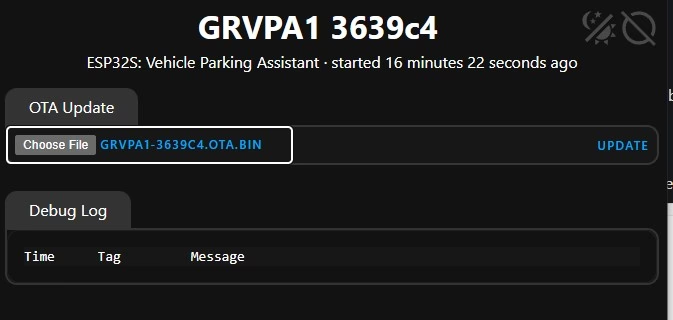
File type should be OTA format when prompted for it.
Physical USB Serial Method
To enable direct flash mode on the GRVPA1 AC model you need to depress and hold the flash button then toggle the reset button. Make sure you connect your USB to serial adapter to the UART flashing connector as shown here.
Serial TX and RX pins should be crossed e.g.
J1 GRVPA1 : USB Adapter
TX -> RX
RX <- TX
3.3v - 3.5v Max
GND - GND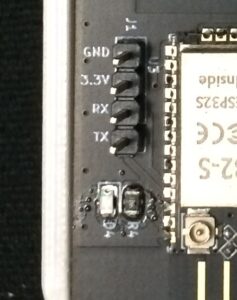
For the USB powered model just simply connect the cable, the flash mode will auto enable.
Prepare the firmware by selecting install on the top right of the ESPHome edit screen.

Select Plug into this computer.

GRVPA1 will now come online and you can add it to Home Assistant with the configured key.
This completes the setup Guide.